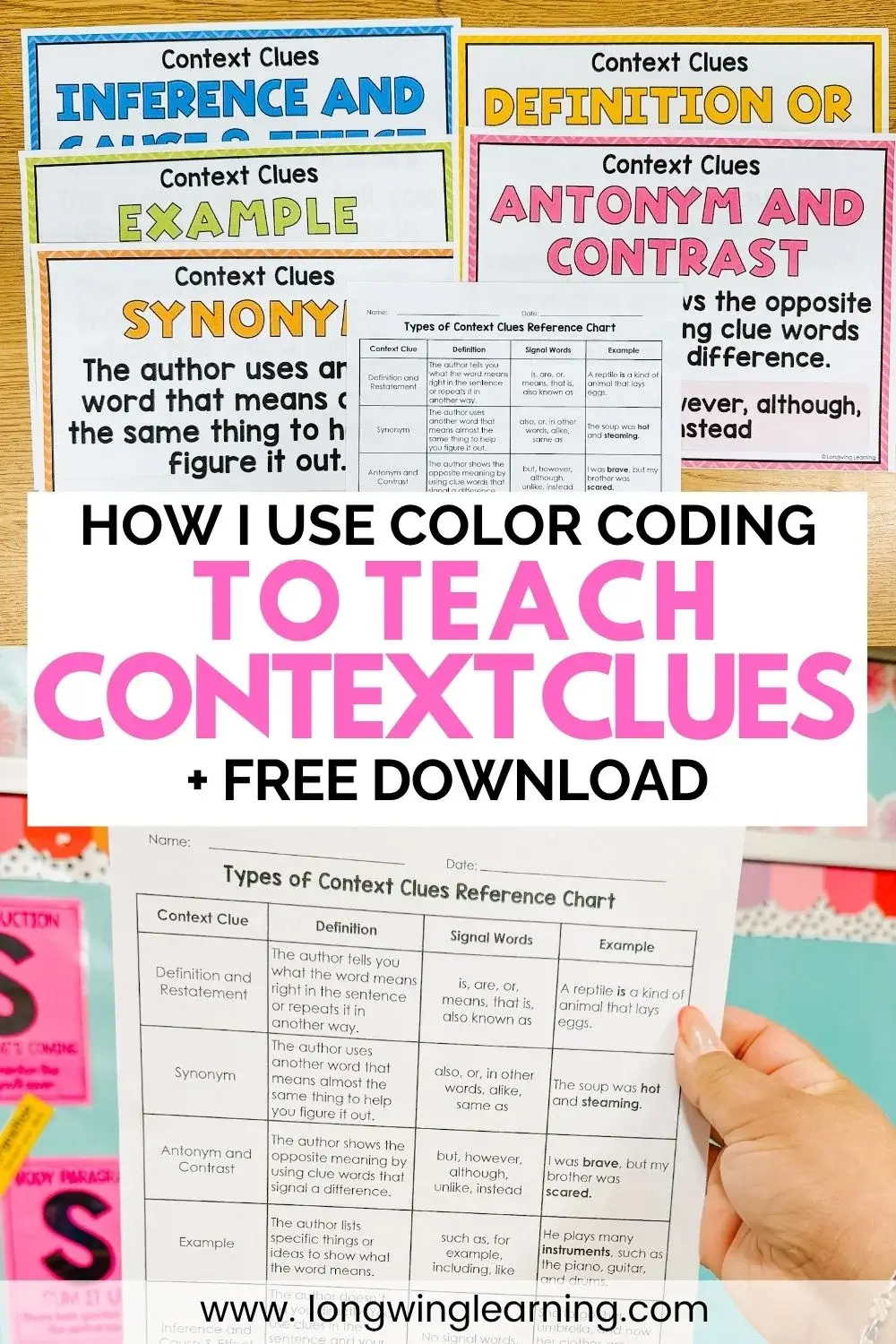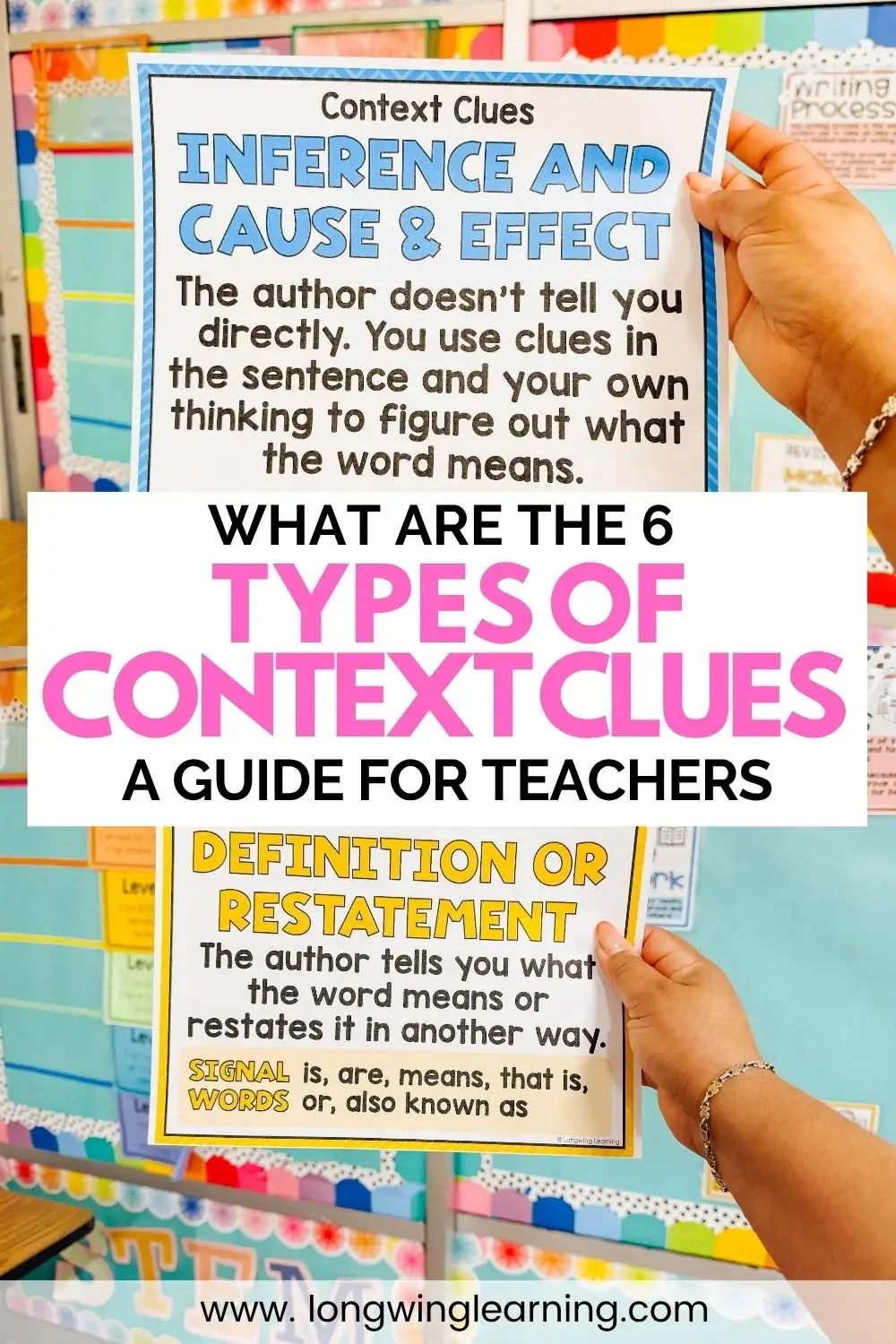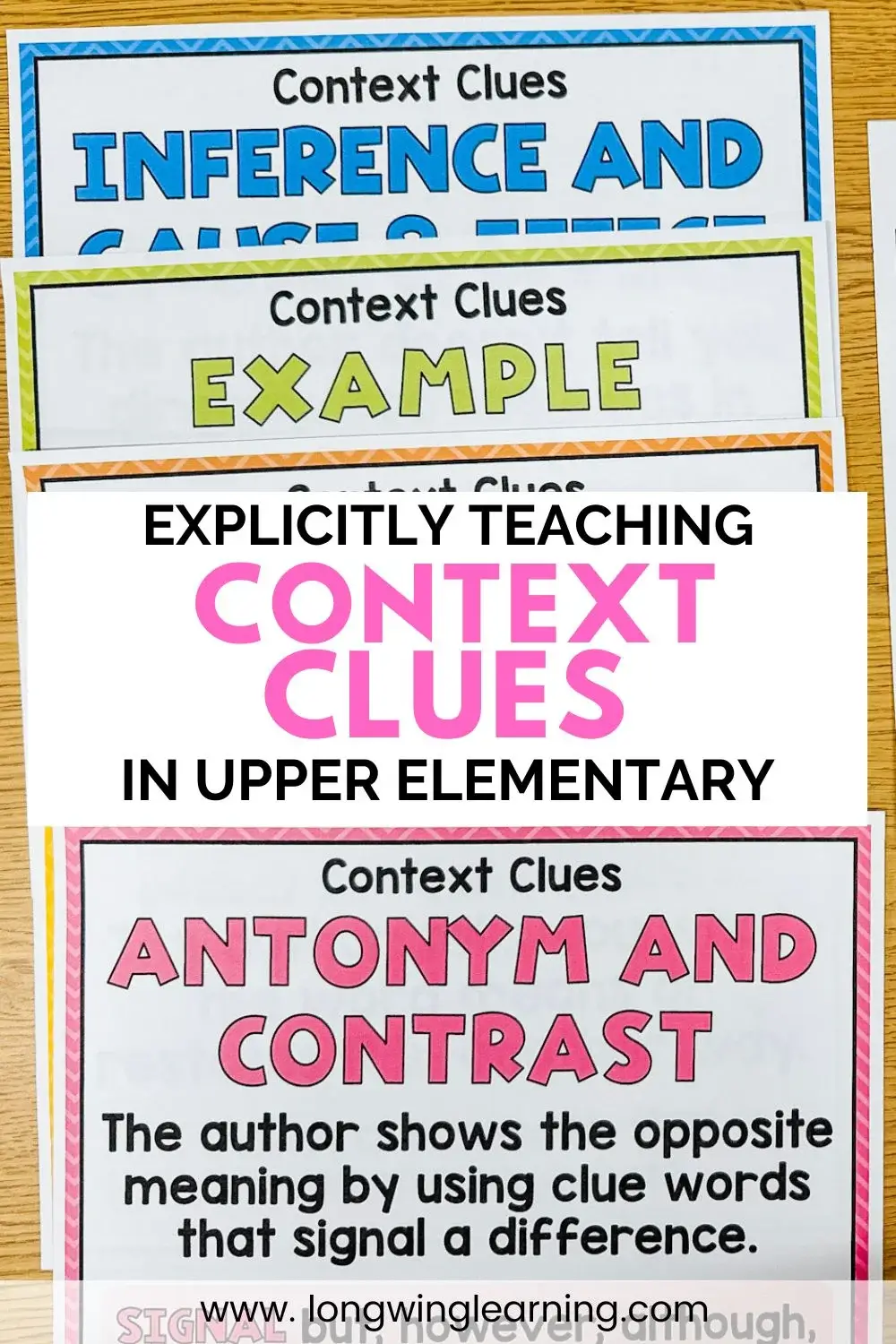Many students are told to “use context clues,” but few are shown how to infer meaning when the clue isn’t obvious.
In this post, we’ll explore how teaching inferencing context clues builds stronger, more analytical readers.
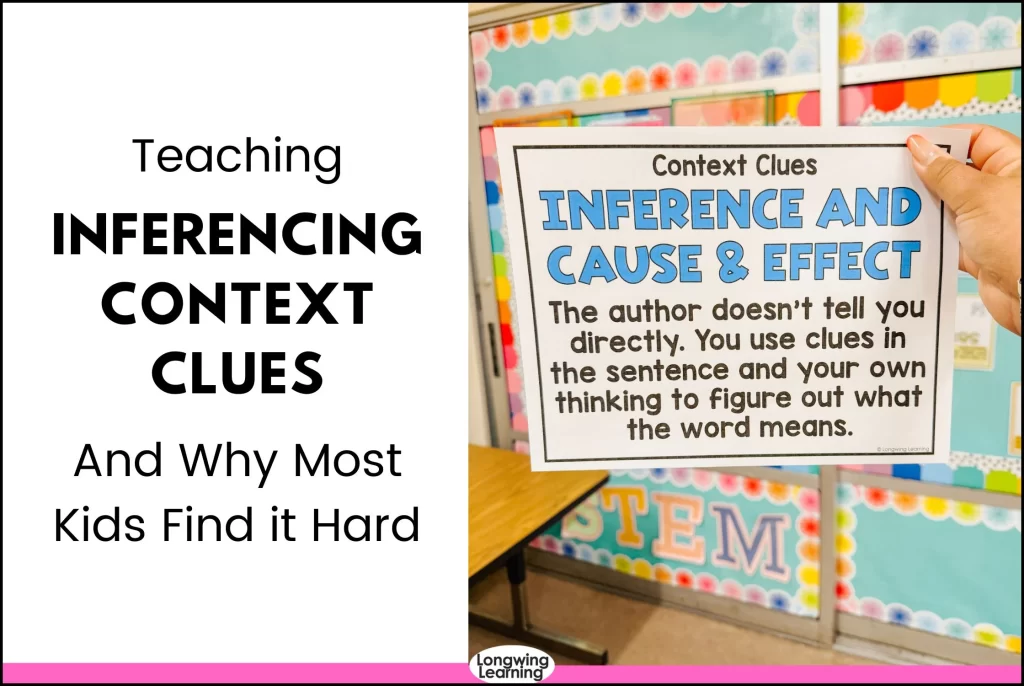
Of all six types of context clues, inferencing context clues are the sneakiest. They require students to connect ideas, consider tone, and use logic to deduce the meaning of unfamiliar words.
In this post, we’ll unpack what inference clues look like, why they challenge even strong readers, and how I teach them explicitly in my upper elementary classroom.
You’ve probably taught synonym clues.
You’ve introduced antonyms.
You may have covered definition or example clues.
But inference clues?
These require a deeper level of thinking.
They ask students not just to identify meaning, but to interpret, analyze, and reason through the text. That makes them essential to comprehension and worth teaching well.
What Are Inferencing Context Clues?
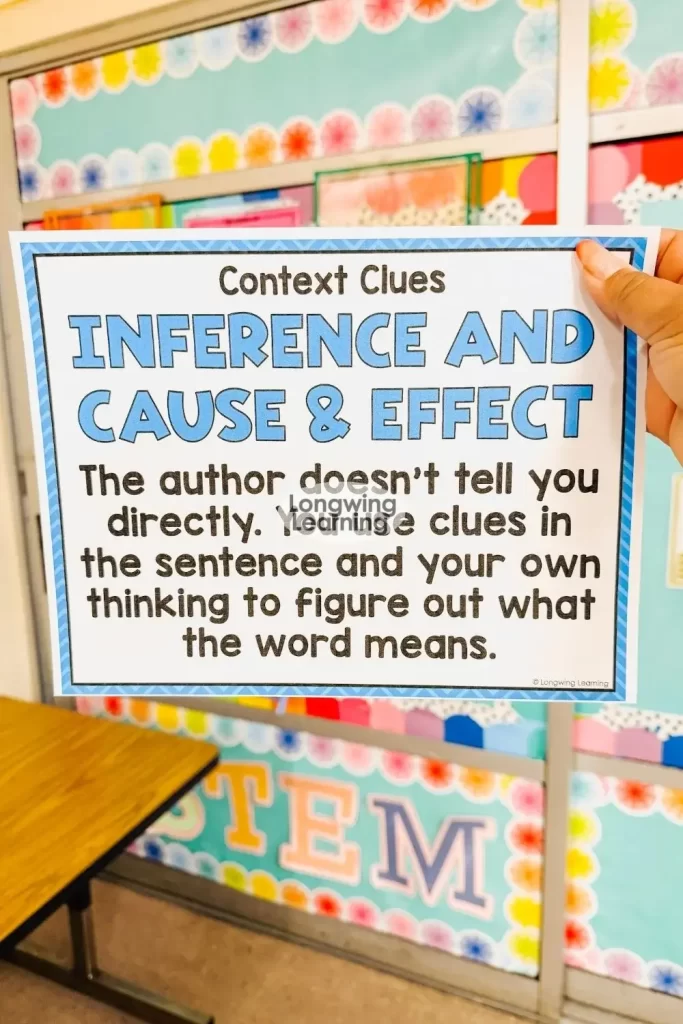
Inferencing context clues are those that do not explicitly define the unknown word. Instead, they suggest its meaning through the surrounding situation, tone, or cause-and-effect relationships.
Unlike clues that provide a clear synonym or direct explanation, inference clues rely on the reader’s ability to make a logical guess based on the context.
These clues often show up as:
- Cause and effect
- Part to whole
- Item to category
- Tool to function
- Comparison
Here is an example:
The canyon was so arid, not a single blade of grass could grow.
There’s no synonym or definition here—but the relationship between arid and “not a single blade of grass could grow” gives us a strong hint: arid must mean dry or barren.
It’s a thinking clue. And that’s why it’s tricky.
Why Are Inferencing Context Clues So Hard to Teach?
There are a few reasons this clue type gives kids trouble:
- It’s not labeled.
There’s no signal word like or, which means, or however that screams “I’m a clue!” - It requires inference.
Students have to connect ideas and reason through the relationship. - It’s subtle.
The sentence might include imagery, emotion, or an abstract relationship that’s harder to grasp.
It overlaps with other types.
Sometimes a clue is BOTH an example AND an inference. That gray area can confuse students who want clean categories.
How I Teach Inferencing Context Clues Explicitly
I teach this type explicitly just like I do with the others, but I give it a little more space and a lot more modeling.
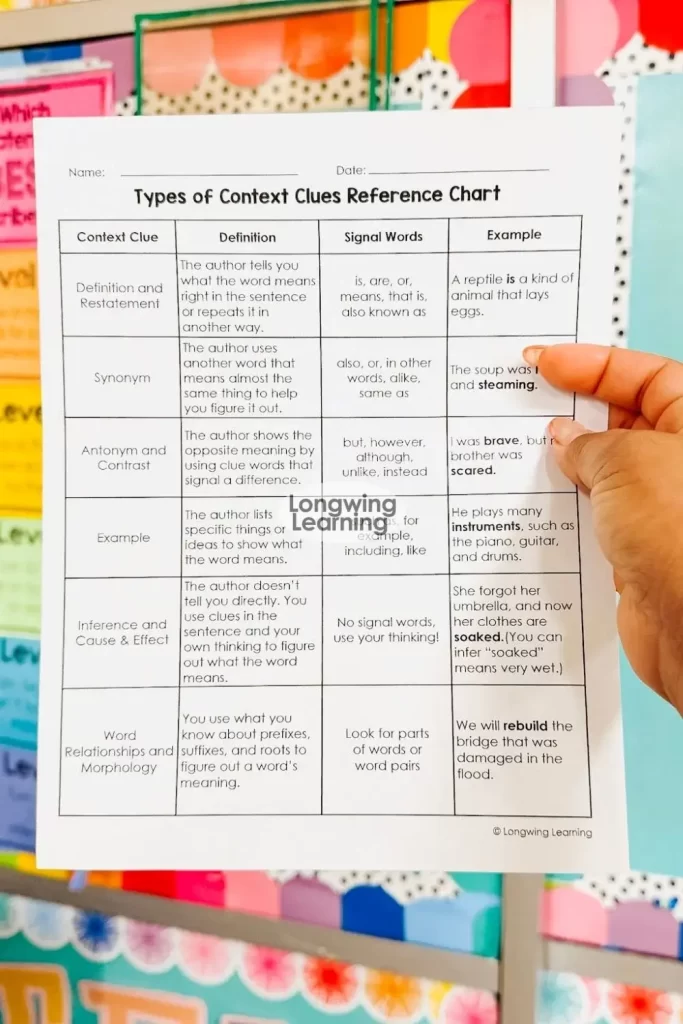
Here’s my step-by-step:
Step 1: Start With Familiar Experiences
I begin by anchoring inference in real-world examples:
- If someone yawns, what can you infer?
- If the sky turns dark and thunder rumbles, what might happen next?
These discussions help students understand that they already make inferences all the time
We brainstorm relationships they already understand:
- A pencil = something you use to write
- Fire = something that gives off heat
- A broken bone = result of falling
This helps them see the power of connections.
Step 2: Model the Thinking Aloud
Using short sentences, I read and then ask aloud:
- What’s happening here?
- What do we know?
- What might this word mean based on the rest of the sentence?
Example Sentence:
The volcano was so volatile, the villagers evacuated before the eruption.
Think Aloud:
If people are evacuating, it must mean the volcano is dangerous or unpredictable. So volatile must mean something risky or unstable.
I read a sentence like:
The volcano was so volatile, the villagers evacuated before the eruption.
I model thinking aloud:
- “Why would people evacuate?”
- “What does this tell me about the volcano?”
- “What kind of relationship do I see between ‘volatile’ and the rest of the sentence?”
I might say:
“Even though I don’t know the word ‘volatile,’ I can tell it has to do with danger or unpredictability. I see a cause-and-effect relationship here.”
We highlight the unknown word and the surrounding clue.
Step 3: Create an Anchor Chart
I created a simple Inference Reference Chart with examples like:
- Tool → Function (hammer → pound)
- Part → Whole (petal → flower)
- Cause → Effect
- Item → Category
Students keep this chart in their reading folder or notebook, and we refer to it often.
Step 4: Practice With Mixed Sentences
Once we’ve gone over the examples, we practice identifying the relationship between the words, even when the sentence is a little tricky.
I scaffold this heavily at first.
We ask:
- What two things are being compared or connected?
- What is the relationship between them?
- What clue helps us define the word?
Over time, students begin to identify the process on their own.
Where I Reinforce Inferencing Across the Curriculum
This strategy isn’t limited to vocabulary lessons. I embed inference practice throughout my day:
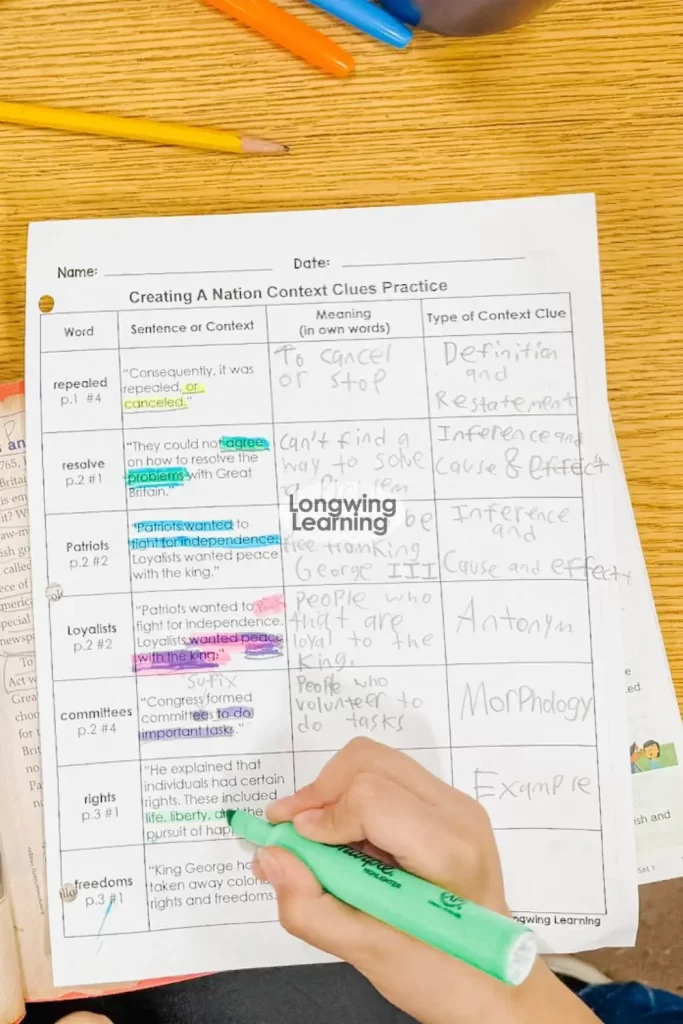
Here’s where I reinforce the strategy:
| Subject Area | How I Use It |
| Reading | Second reads, vocabulary discussions, and close reading annotations |
| Writing | Students use context clues to improve sentence clarity and word choice |
| Science | Defining academic terms like erosion, condensation, or photosynthesis using diagrams and sentences |
| Social Studies | Understanding historical vocabulary like revolt, civil, or migration by analyzing cause-effect |
| Test Prep | Practicing multiple-choice questions with unknown words and no direct definition |
The skill transfers beautifully across content, and students begin to see that vocabulary isn’t just about knowing words… It’s about understanding how words work together.
Vocabulary = Comprehension: Why Inference Skills Matter
When students can infer the meaning of a word in context, they are more likely to understand the entire passage. It boosts fluency, builds confidence, and reduces frustration.
Too often, struggling readers skip hard words. But with this strategy, they begin to see unfamiliar vocabulary as solvable problems – not as roadblocks.
Explicitly teaching inferencing context clues equips students with the tools to:
- Think critically
- Use logic and evidence
- Engage deeply with text
This is the kind of literacy work that pays off across subjects and years.
Download My Inference Clue Reference Chart
Need a ready-to-use tool to launch this strategy? Grab my Inference Clue Context Clue Reference Chart.
It includes:
- Common clue types
- Examples for each category
- Space for students to sketch or take notes
Perfect for notebooks, anchor charts, and guided reading groups.
Want Ready-to-Go Resources?
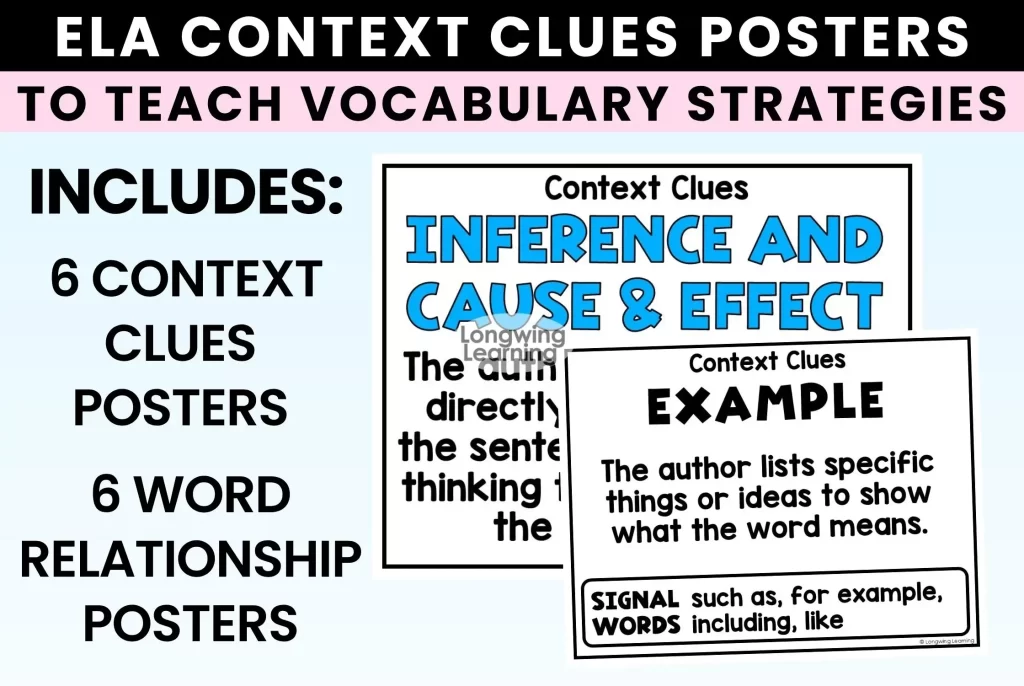
The Context Clues Poster Pack includes visuals for all six clue types, including inference.
You’ll also find:
These tools all work together to deepen vocabulary and comprehension.
Teach Students to Read Between the Lines
Inferencing context clues may not be as flashy as synonyms or definitions, but they build the kind of readers who can think beyond the surface.
When you model the process, provide practice, and revisit it often, students gain confidence.
They start saying things like, “I think that word means… because this sentence suggests…”
And that’s when you know it’s working.
Pin this post, grab the freebie, and tag me on IG @longwinglearning when you try it in your next reading lesson!
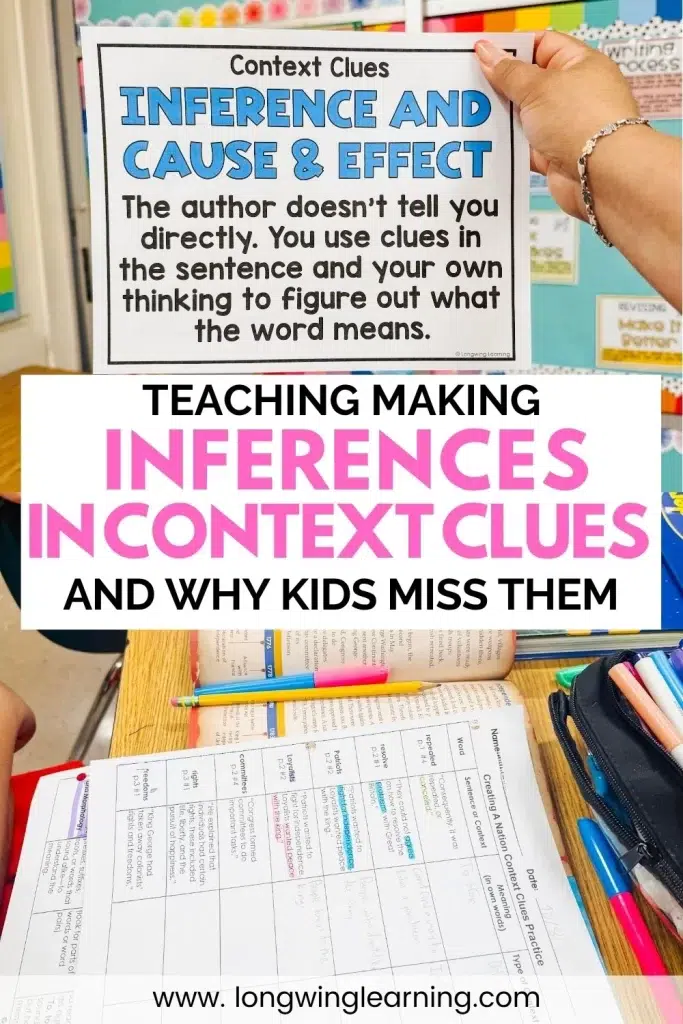
Explore the Full Context Clues Series
Want to keep going?
This post is the fourth in my Context Clues Series; check out:
- What are the 6 Types of Context Clues?
- Why Explicitly Teaching Context Clues Changes Everything
- How I Use Color Coding Context Clues to Teach Vocabulary
- Teaching Inferencing Context Clues
- How Teaching Prefixes and Suffixes in Groups Boosts Comprehension
- How to Help Students Analyze Context Clues (Not Just Spot Them)







